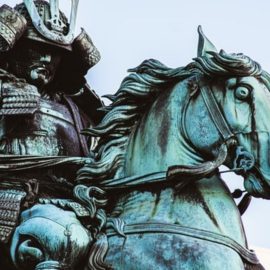

This article is an excerpt from the Shortform book guide to "The Fifth Agreement" by Don Miguel Ruiz. Shortform has the world's best summaries and analyses of books you should be reading.
Like this article? Sign up for a free trial here .
What are the historical and intellectual contexts of The Fifth Agreement? What impact has the book had? What do the critics say?
In The Fifth Agreement, don Miguel Ruiz and don Jose Ruiz describe five “agreements” to make with yourself that adjust the way you see the world and your place in it. According to the authors, these agreements speak to the hearts of all people—everyone who’s learned a language, participated in a culture, and grown up around other people. They’re a series of intuitively common-sense principles we are all aware of—but which few of us actually practice. Those who have mastered the five agreements, the authors say, completely accept themselves as they are, and accept everyone else as they are, and the result is eternal happiness.
Read on to learn more about The Fifth Agreement.
The Fifth Agreement
We will discuss the historical and intellectual contexts of The Fifth Agreement and the book’s impact and critical reception. We also will include some commentary on the book’s approach and organization.
Historical Context
don Miguel Ruiz and his son claim a direct lineage to the Toltec of old, and—as naguals—credit their knowledge, teachings, and spirituality to the Toltec.
In some cases, historians refer to the Toltec as a Mesoamerican legend; a semi-mythical culture revered—and perhaps invented by—the Aztec. In other cases, experts describe the Toltec as the warrior culture from which the worship of Quetzalcoatl originated, and from whom the Aztec inherited the alleged practice of human sacrifice. Overall, historians appear to disagree on whether the Toltec were an imperial power, a small-time kingdom, or something else entirely.
In their work, the Ruizes describe the Toltec as a group of scientists and artists who came together to study and conserve the spiritual practices and knowledge of their predecessors. Perhaps corroborating this claim, in the language of the Nahua, one of the indigenous peoples of Mexico, Toltec means artist, artisan, or wise man.
Either way, most of the information we have about the Toltec comes from Aztec and post-colonial texts and oral traditions. Given the worship-like esteem the Aztec held for the Toltec, historians express uncertainty regarding the reliability of Aztec information about them. What we can be sure of is that the Toltec were masters of sculpture and architecture, as their buildings and sculptures are the only first-hand evidence that remains of the culture.
Intellectual Context
The ideas put forth in The Fifth Agreement, and The Four Agreements before it, can be found—albeit described differently—in various philosophies and religions.
The book’s core principle, that the world we perceive is a subjective construct that distracts us from what’s really “true,” is shared by Hindu, Buddhist, Taoist, and Christian texts, among others. In Western philosophy, the same idea is expressed by René Descartes, who arrived at his famous claim “I think, therefore I am” in the process of eliminating from his personal belief system anything that could be doubted—including the world his senses showed him.
The Ruizes extend this core principle by noting that not only do humans perceive a different world than really exists, but each human also perceives this world differently. This idea is similarly foundational to the discipline of phenomenological psychology, which notes that a person’s lived experience can be dramatically altered by changes in their mindset, their emotional state, or their physical body. A person whose leg was recently amputated, for example, will perceive, experience, and navigate a room very differently from a person whose legs are both sound; their “reality” is fundamentally different.
Further, psychology notes that our subjective perception of the world and the events of our lives can be altered willingly—we assign meaning and value to what we see according to our personal belief system, and those beliefs can be altered or discarded. The process of examining and adjusting our beliefs—about ourselves, others, and the world—enables successful therapeutic interventions for illnesses like depression and anxiety by allowing us to determine our own benchmarks for success, happiness, and freedom.
The five “agreements” presented by the Ruizes constitute their approach to adjusting our perception of—and reaction to—our world to maximize our freedom to determine how we feel. The Ruizes call this state of total freedom and effortless control “the dream of the third attention.” This final state is essentially what other philosophies refer to as “enlightenment.”
In the sphere of enlightenment philosophy, The Fifth Agreement is unique in that it presents a five-step plan to attaining enlightenment. It’s uncommon that enlightenment—a state that’s difficult to describe in words, let alone teach another person to feel—is boiled down to such a straightforward process. We’ll delve into the connection between The Five Agreements and various interpretations of enlightenment later in the guide.
The Impact of The Fifth Agreement
The Fifth Agreement encompasses most of the information in The Four Agreements, which has been hugely influential. The Four Agreements has been a New York Times bestseller for over a decade and spent over two years on Publisher’s Weekly’s bestseller list, selling over 10 million copies in the US alone. It has been translated into 46 languages.
The book’s cultural impact is evident in the fact that Oprah Winfrey promoted it multiple times—in her magazine and tv show in 2001, and again twelve years later on her show Super Soul Sunday.
The agreements are still widely discussed on the internet today, in forums and articles on psychology, philosophy, wellness, and spirituality. Their ubiquity is also visible in the attention their authors have enjoyed. For example, don Miguel Ruiz received a US Air Force challenge coin. Furthermore, he still hosts talk shows and podcasts about his philosophy years after the books’ publication.
Critical Reception of The Fifth Agreement
It’s difficult to address the critical reception of The Fifth Agreement without acknowledging the impact of its predecessor, The Four Agreements. The first book was wildly popular, and while the second has enjoyed some success since it was published, it has much to measure up to. Further, since The Fifth Agreement contains the entirety of The Four Agreements, praise and criticism for one is often applied to the other.
A criticism solely leveled at The Fifth Agreement is that the authors wrote it primarily as a cash grab. Critics argue that The Four Agreements was well-written, helpful, and generally beloved, and that The Fifth Agreement retreads the same ground without adding much of consequence.
Otherwise, criticism for The Fifth Agreement follows the same trend as that of The Four Agreements. Critics of both books claim that the “agreements,” if followed without proper thought, can be actively harmful. Blindly following a principle like “don’t take anything personally,” these critics say, can be interpreted as permission to ignore all external criticism or discard self-awareness.
Those who dislike the books also describe the foundational principle as “mystical nonsense,” say that the books are too long-winded, or claim that the actionable steps—the “agreements”—are too simplistic to take seriously.
Those who praise the books, however, describe the life-changing effects of beginning to doubt the “truth” of societal expectations, shame, and excessive self-criticism. Many reviewers highlight the freedom and relief that can come with understanding why life is what you make of it, and many claim The Four Agreements is a book everyone should read. Often, the ideas in the book are praised because they’re simple; the underlying logic may be too much for some readers, but the actionables can be put into practice regardless.
Commentary on the Book’s Approach
The state of mind the authors of The Fifth Agreement want their readers to embody is a felt experience rather than one describable in words. As such, they often lead the reader to an intuitive understanding of the principles by describing relevant anecdotes or trains of thought that evoke an emotionally tangible “lived experience” for the reader, rather than by stating their conclusions outright.
For example, in one section, the reader is asked to imagine sitting in a theater and watching the movie of their life. They see their parents, friends, and acquaintances, and all the familiar formative events centered around them as the main character. After a time, the reader is led to watch the movie of their mother’s life and discovers how differently she’s interpreted the same events. They notice that she sees everything, including them, very differently than they do. Events that felt significant to them are only sidenotes in their mother’s story, and vice-versa—thus, the reader is guided to the realization that “everyone lives in a different reality.”
This meandering approach can be rewarding if the reader is open to being led to the principles indirectly, but it can equally be frustrating for those who prefer a more direct style.
Commentary on the Book’s Organization
The book is split into two main parts. The first part centers around the power of symbology and belief: We’re surrounded by implied meanings, values, and expectations, the authors say, and our freedom is determined by how strongly we believe in those symbols. This part also contains the first four of the titular “agreements.” They’re each a means of adjusting our beliefs and assumptions to better enable us to be happy and free.
The second part centers on the power of doubt. Doubt, the authors say, is the tool we use to challenge our societal, cultural, and personal expectations and beliefs about ourselves, others, and the world we live in. The authors explore the titular fifth “agreement” here: Doubt the words others use to convey their true message and that message becomes easier to see. They follow this agreement with a description of three stages of “dream”—or perspectives on life—that we progress through on our road to the Toltec equivalent of enlightenment.
The five “agreements” presented in the book don’t each have their own chapter; rather, they’re often presented as mid-chapter “conclusions” to a train of thought. As such, it can be difficult to flip through the book and find, say, the third “agreement” and its rationale.

———End of Preview———
Like what you just read? Read the rest of the world's best book summary and analysis of Don Miguel Ruiz's "The Fifth Agreement" at Shortform .
Here's what you'll find in our full The Fifth Agreement summary :
- The five “agreements” to make with yourself that adjust your outlook
- How to rediscover your true self and recapture the freedom you felt as a child
- A five-step process to escape the mirage of “the real world”






